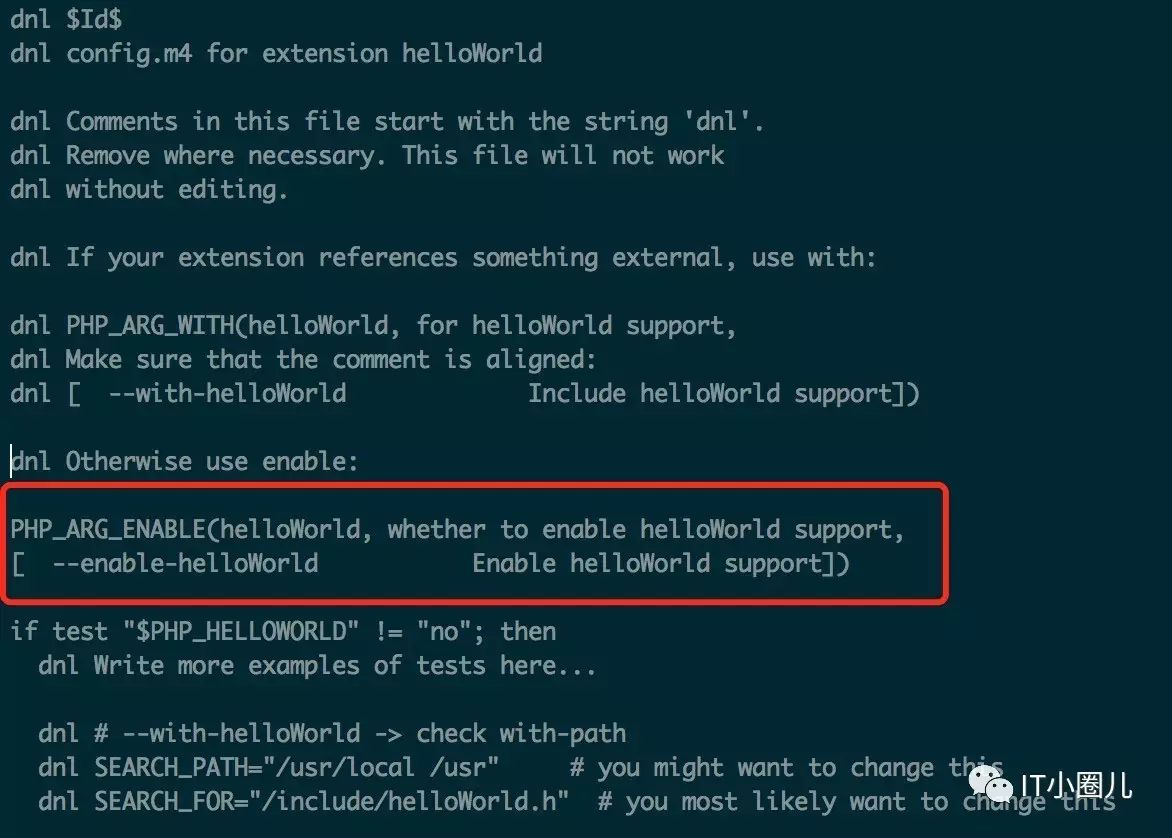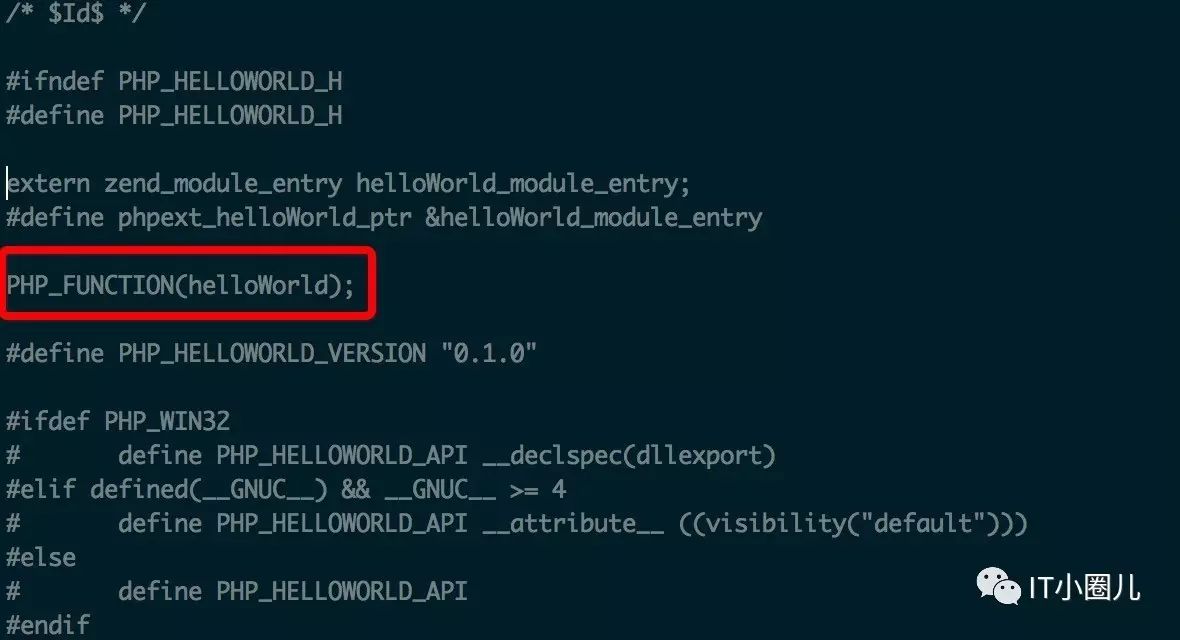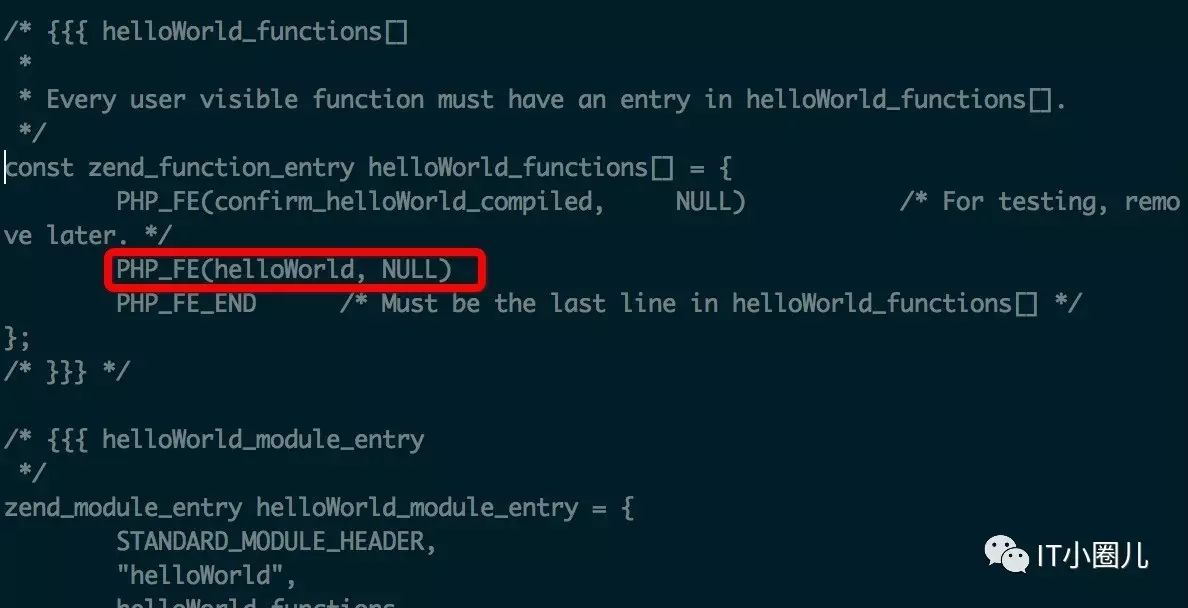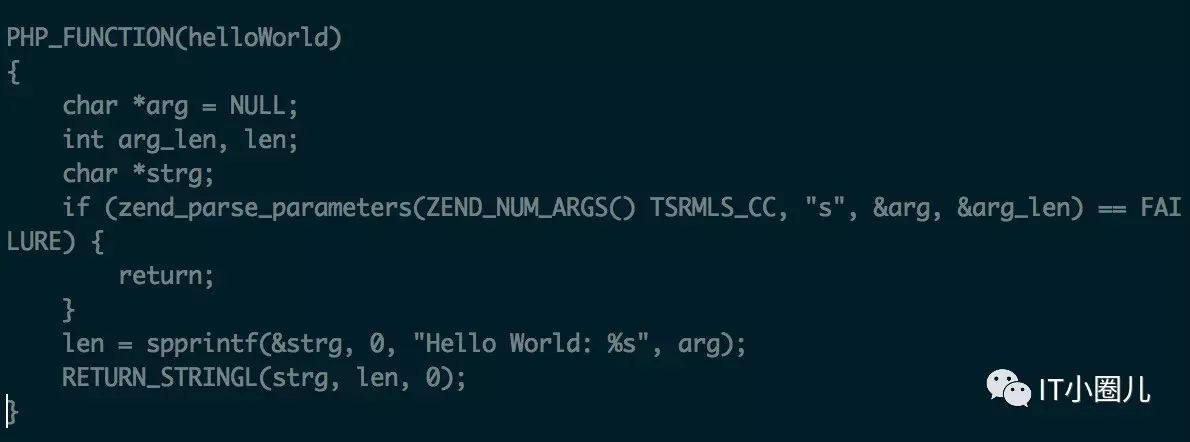这篇文章主要讲解了“怎么在Linux下编写一个PHP扩展”,文中的讲解内容简单清晰,易于学习与理解,下面请大家跟着小编的思路慢慢深入,一起来研究和学习“怎么在Linux下编写一个PHP扩展”吧!
假设需求
开发一个叫做 helloWord 的扩展。
扩展里有一个函数,helloWord()。
echo helloWord('Tom');
//返回:Hello World: Tom本地环境
PHP版本:5.6.9
系统:Linux CentOS release 6.5 (Final)
最终效果

实现流程
第一步:
进入到本地的php目录执行: cd /root/soft/src/php-5.6.9 cd ext ./ext_skel --extname=helloWord cd helloWord vi config.m4 搜索:dnl Otherwise use enable 将下面修改成: PHP_ARG_ENABLE(helloWorld, whether to enable helloWorld support, [ --enable-helloWorld Enable helloWorld support]) if test "$PHP_HELLOWORLD" != "no"; then ...
如图:

第二步:
vi php_helloWorld.h 搜索:extern zend_module_entry 新增一行: PHP_FUNCTION(helloWorld);
如图:

第三步:
vi helloWorld.c 搜索:const zend_function_entry helloWorld_functions[] 新增一行: PHP_FE(helloWorld, NULL)
如图:

在 helloWorld.c 底部新增一个方法
PHP_FUNCTION(helloWorld)
{
char *arg = NULL;
int arg_len, len;
char *strg;
if (zend_parse_parameters(ZEND_NUM_ARGS() TSRMLS_CC, "s", &arg, &arg_len) == FAILURE) {
return;
}
len = spprintf(&strg, 0, "Hello World: %s", arg);
RETURN_STRINGL(strg, len, 0);
}如图:

第四步:
//编译安装 cd /root/soft/src/php-5.6.9/ext /usr/local/php/bin/phpize #用phpize生成configure配置文件 ./configure --with-php-config=/usr/local/php/bin/php-config #配置 make #编译 make install #安装
第五步:
//修改php.ini extension="helloWorld.so" #名称为安装扩展的名称
第六步:
重启环境。
完成上面的步骤,简单的 helloWorld 扩展就OK了。
感谢各位的阅读,以上就是“怎么在Linux下编写一个PHP扩展”的内容了,经过本文的学习后,相信大家对怎么在Linux下编写一个PHP扩展这一问题有了更深刻的体会,具体使用情况还需要大家实践验证。这里是亿速云,小编将为大家推送更多相关知识点的文章,欢迎关注!
免责声明:本站发布的内容(图片、视频和文字)以原创、转载和分享为主,文章观点不代表本网站立场,如果涉及侵权请联系站长邮箱:is@yisu.com进行举报,并提供相关证据,一经查实,将立刻删除涉嫌侵权内容。